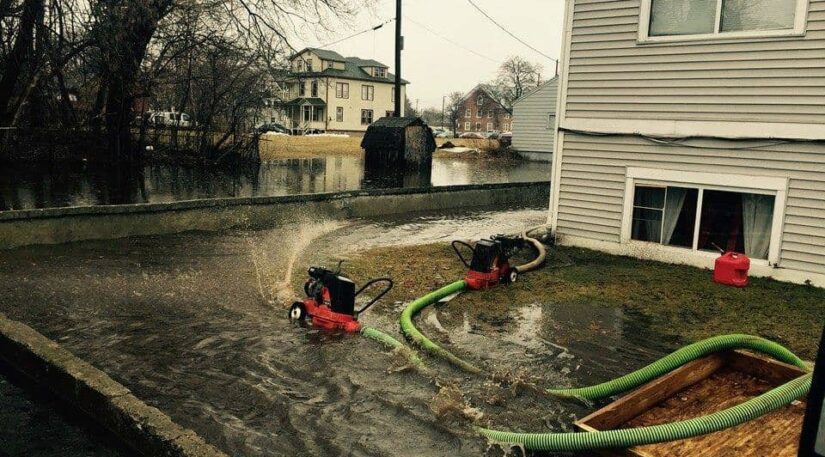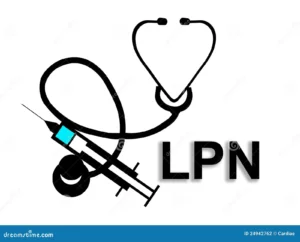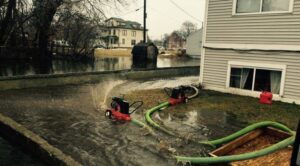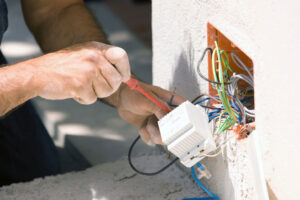Common Causes of Water Damage in Homes

Water damage is one of the most common and costly issues homeowners face. Whether plumbing failures or natural disasters cause it, water intrusion can lead to structural damage, mold growth, and expensive repairs. Understanding the causes is the first step in recognizing the signs early and addressing the problem before it worsens. Below are some of the most frequent sources of water damage in residential properties.
Leaking or Burst Pipes
One of the leading causes of water damage in homes is leaking or burst pipes. These incidents can occur for several reasons including aging plumbing systems, extreme temperature changes, corrosion, or poor water pressure regulation. Pipes located inside walls, ceilings, and under flooring can leak slowly over time, causing gradual water damage that is difficult to detect without obvious signs. In colder climates, frozen pipes are a particular concern, as the water inside can expand and cause the pipe to burst, releasing large volumes of water into the home.
Burst pipes often result in immediate and severe water damage. The rapid flow of water can quickly flood rooms, soak drywall, destroy flooring, and damage electrical systems. Even a small leak, if undetected, can create long-term structural issues, including weakened beams and mold growth behind walls.
Faulty Appliances
Appliances that use water—such as washing machines, dishwashers, water heaters, and refrigerators with ice makers—can be common sources of water damage when they malfunction. Over time, hoses can deteriorate, connections can loosen, and components may fail, allowing water to escape. Older appliances are particularly prone to leaks, especially if they have not been regularly maintained or inspected.
Water heaters, in particular, can cause significant damage when they fail. Tanks may corrode from the inside over years of use, eventually leading to cracks or ruptures. When a water heater breaks, it can release tens of gallons of water onto surrounding surfaces, often soaking drywall, carpeting, and flooring materials. These incidents often occur without warning, especially in units more than 8–10 years old.
Roof Leaks and Poor Drainage
The roof is a home’s first line of defense against the elements, but it is also vulnerable to water intrusion when damaged or poorly maintained. Cracked, missing, or aging shingles can allow water to seep through and enter the attic or upper floors. Heavy rain, snow accumulation, or windstorms can exacerbate existing weaknesses in the roofing system. Once water penetrates the roof, it can cause ceiling stains, insulation damage, and mold in attic spaces.
If roof leaks are not addressed promptly, the damage can spread quickly throughout a home. In such cases, it’s crucial to work with experienced professionals like Lindstrom Restoration who specialize in identifying and repairing water damage effectively. With their support, homeowners can minimize the impact and address the problem before it worsens.
Inadequate drainage systems, such as clogged gutters and downspouts, can also contribute to roof-related water damage. If gutters are not directing water away from the home properly, it can accumulate near the roofline or foundation. Over time, this can lead to water pooling in places it shouldn’t, causing further deterioration and leaks.
Poorly Sealed Windows and Doors
Windows and doors that are not properly sealed or maintained can be entry points for water, especially during rainstorms or in humid climates. When caulking and weather stripping wear out, gaps can form around frames, allowing water to enter and accumulate on window sills, floors, and inside walls. In some cases, this water intrusion is slow and subtle, but over time it can lead to wood rot, mold growth, and deterioration of interior materials.
Water seeping through improperly sealed windows may look minor at first, but it can become a major issue over time. For homeowners dealing with these kinds of problems, timely water damage repair can prevent the situation from escalating into a costly and hazardous structural concern.
Improper installation of windows and doors can also create vulnerabilities. Water can seep in around the framing if flashing isn’t applied correctly, or if the surrounding wall isn’t adequately waterproofed. These types of leaks often go unnoticed until water stains or warped wood surfaces appear, by which time the damage may already be extensive.
Sewer and Drain Backups
Sewer and drain backups are among the most hazardous causes of water damage, as they often involve contaminated water that can pose serious health risks. These backups occur when the main sewer line becomes clogged or overwhelmed, typically due to tree root intrusion, grease buildup, or heavy rainfall overwhelming municipal sewer systems. When a backup happens, wastewater can flow back into the home through sinks, toilets, bathtubs, or basement drains.
Unlike clean water leaks from appliances or pipes, sewer backups can result in black water contamination—water that contains harmful bacteria, viruses, and chemicals. This type of water damage requires specialized cleanup and sanitation procedures to ensure safety and prevent further contamination. Sewer backups can also damage flooring, drywall, electrical systems, and furniture, and often result in extensive property losses.
HVAC System Malfunctions
Heating, ventilation, and air conditioning (HVAC) systems can also contribute to water damage in homes when they malfunction or are not properly maintained. Central air conditioning units produce condensation as they cool the air. Normally, this moisture is carried away through a condensate drain line. If this line becomes clogged or the drain pan overflows, water can leak into surrounding areas.
Additionally, furnaces and other heating systems that use water or produce steam can leak if components fail or seals degrade. Ductwork running through humid or poorly ventilated areas may also accumulate condensation, leading to dripping and gradual water damage inside walls or ceilings. These HVAC-related leaks can go unnoticed for extended periods, especially in attics or crawl spaces, allowing mold and mildew to thrive.
Conclusion
Water damage in homes can originate from a variety of sources, many of which are built into the everyday functions of the household. From plumbing failures to appliance breakdowns and structural vulnerabilities, the potential for water intrusion exists in almost every part of a home. Because water damage can be both immediate and long-lasting, the impact is not just physical—it also affects the safety, comfort, and value of a property.
Understanding the most common causes of water damage can help homeowners stay alert to early warning signs and take the necessary steps to limit their exposure. From roof leaks to failing appliances, each source comes with its own risks and repair challenges. Recognizing these issues early and acting quickly can make a significant difference in the extent and cost of water damage in any home.






